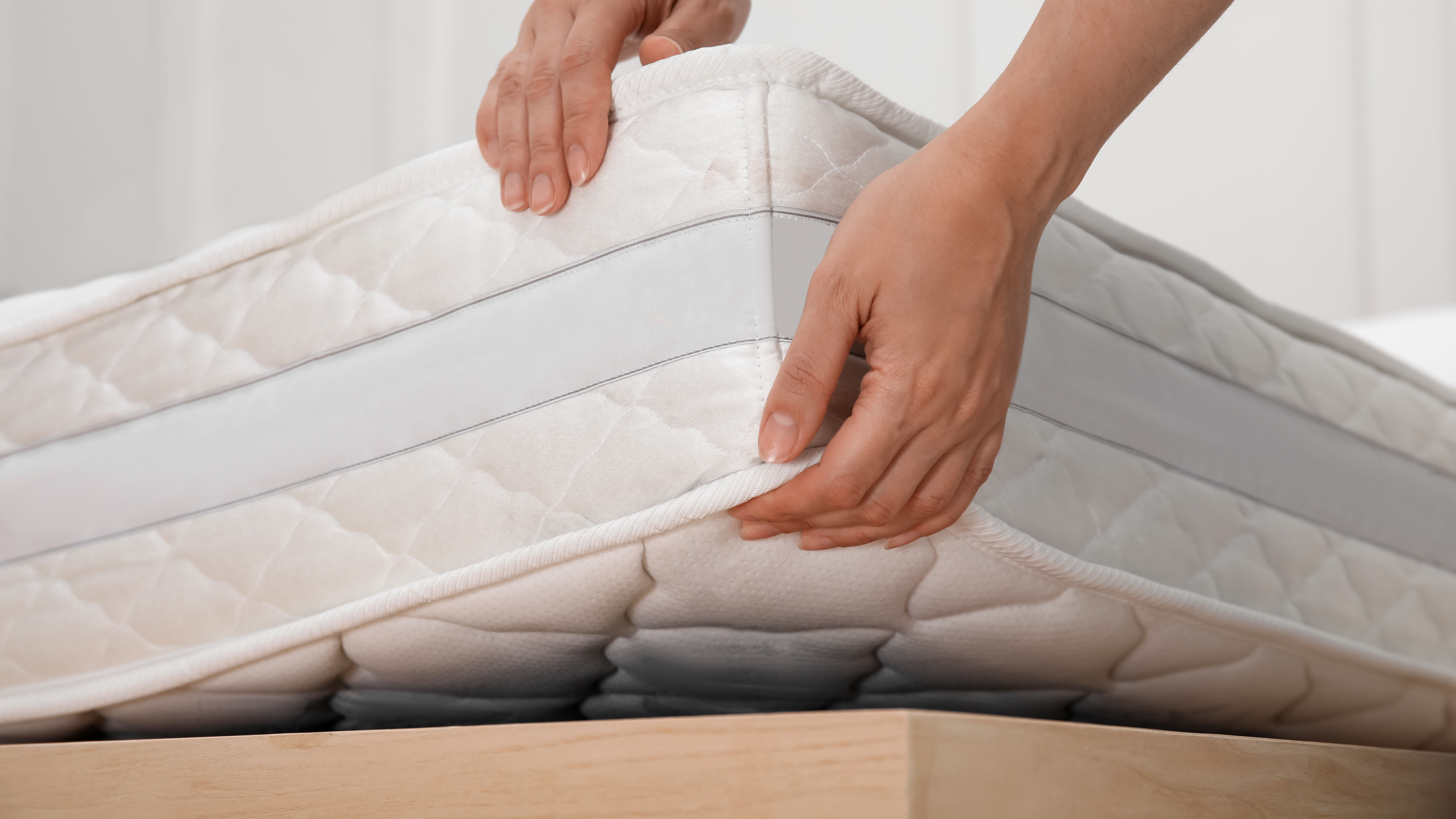5 biggest mistakes people make when buying a mattress online
Don't fall into the same trap when buying a new mattress online

Shopping for a new mattress is exciting – the promise of better sleep and less aches and pains in the morning is hard to resist. But buying a mattress online is a whole different ball game compared to buying in store.
So how do you get it right and avoid having to buy and return endless beds in your quest to find the very best mattress for your body type and budget?
I’ve been reviewing mattresses for years and have also bought various mattresses online for my own home and for family members, as well as during secret shopper tests as part of my job. So I know how the buying process works and what you should and shouldn’t do.
Here I’ll walk you through the 5 biggest mistakes people make when buying a mattress online vs in store so that you can avoid them and get a comfy new bed from the get-go. Now is a great time to consider buying too as we’re seeing very competitive prices from several major brands ahead of this year’s Black Friday mattress deals. Plus, if you do snap up the new bed of your dreams, be sure to dispose of your old mattress responsibly by following our guide on how to get rid of an old mattress.
1. They don’t consider their sleep needs
You’d be surprised at how many people buy a mattress because of the way it looks or because the marketing jargon is persuasive. Both of these are huge mistakes that will cost you time and possibly a returns fee as you’ll inevitably end up sending the mattress back.
The single most important factor to consider when buying a mattress online is this: will it help my body sleep more comfortably at night?
That means the mattress needs to come in your preferred firmness (also called feel or comfort level) and it needs to be breathable so that you don’t overheat in bed. So if the mattress you’re considering doesn’t offer a good variety of firmness levels, and it isn’t capable of good temperature regulation, run away.
Get instant access to breaking news, the hottest reviews, great deals and helpful tips.

2. They get swayed by price alone
Another big mistake people make when buying online is getting seduced by a juicy discount. But what’s the point in saving 40% on a mattress that doesn’t suit your body and sleep style?
All of our top-rated mattresses in a box are regularly discounted and some even come with free bedding. That said, some brands claim that their current sale is ‘time-limited’ whereas in fact it’s available each month – they just change the marketing language to make it look like a new sale.
Each month we round-up the best mattress sales and these include truly time limited flash sales when they happen. Nectar and DreamCloud have run a couple of these lately, with savings of up to 40%.
3. They don’t use the full trial period
This mistake applies to people who have bought a mattress online, yet leave it sitting in the box, unopened for some time. Each mattress sold online comes with a trial period ranging from 90 to 365 nights. Mattress trial periods are vitally important because you won’t have a chance to lie and sleep on the mattress in store before buying it, so you need time at home to do so.
We recommend testing a mattress for at least 30 nights before making a decision, as this is the minimum period it takes for your body to get used to a new sleep surface. The longer you leave that mattress sitting in a box, the more you’ll eat through your trial period and the less time you’ll have overall to test it properly then return it within the trial period.
You have zero chance of returning or exchanging a mattress bought online if you are outside of this trial period.

4. They don’t research the materials
There are several types of mattresses available to buy online, with the most popular being memory foam mattresses, latex or organic beds, hybrid mattresses and temperature-regulating cooling mattresses.
Each of these uses different materials that can have a huge impact on your quality of sleep – and how fast you fall asleep. Memory foam, for example, might feel cozy and contouring at first but, unless it’s infused with cooling gel foam or dressed with a temperature regulating cover, it has a tendency to hold onto excess body heat. If you sleep hot at night, memory foam could make you super uncomfortable.
Likewise, if you have allergies your runny nose and itchy eyes might get triggered by most mattresses that aren’t hypoallergenic. Always triple-check the main materials in the mattress and make sure you understand how they will make you feel in terms of comfort, heat and possible allergies.
5. They don’t use a mattress protector
It’s tempting to unbox your new mattress, let it off-gass for a few hours then cover it in a fitted sheet before sleeping on it. Can you spot the mistake there? Yes, many people forget to cover their new mattress with a good quality mattress protector.
Not only will a protector keep your bed safe from spills, stains, bugs and bacteria, using one from the day one of receiving your new mattress is written into the T&Cs of many trial periods.
If you don’t use a mattress protector and you try to return a stained or damaged mattress, you’ll have zero chance of an exchange or refund.
How to buy a mattress online successfully
I’ve purchased several mattresses online – some for my own home, some for family, and others as part of my job when I want to perform a secret shopper test on a brand to see how good their customer service is.
Here are my top mattress shopping tips for first-time buyer’s and for people who have tried to buy online before but didn’t enjoy it:
- Know your sleep position – For example, if you love sleeping on your side, then ignore all those back sleeper mattresses and pick the best side sleeper mattress for your budget instead.
- Be honest about your body weight – I’ve always been curvy, so I need a medium-firm mattress to support my body correctly and to spread out my weight across the mattress. But if you weigh under 150lbs you may need something softer to offer more cushioning. If you weigh over 250lbs, you’re better off with a mattress for heavy people.
- Consider your partner’s needs too – Unless you’re buying a split-king mattress where one side has a different firmness to the other, you’ll need to figure out what firmness and sleep qualities matter to the both of you in a mattress. The best smart beds and mattresses are excellent for couples with wildly different needs.
- Read the trial period and warranty terms – Get clear on what you can and can’t do with the mattress during the trial period, and what the warranty covers and what it doesn’t. Also, how long does it last? 10 years is a standard term, but some brands, like Saatva, Nectar and DreamCloud, offer lifetime warranties. That’s huge added value.

Claire is a Certified Sleep Science Coach and the Managing Editor of Sleep at Tom's Guide. She curates our mattress guides and oversees our rigorous mattress testing procedures. Claire has over 16 years' product review experience and is connected to a wealth of globally renowned sleep experts including mattress designers and buyers, neuroscientists, and doctors of sleep medicine. As the Managing Editor of our Sleep and Mattress Team, Claire is responsible for all mattress and sleep content published on Tom’s Guide and is our expert on Saatva, DreamCloud, and Nectar mattresses. Claire is also certified to advise people on how to choose a mattress that suits their needs and budget, as well as helping them to create a nighttime routine and bedroom environment that helps them sleep better.
